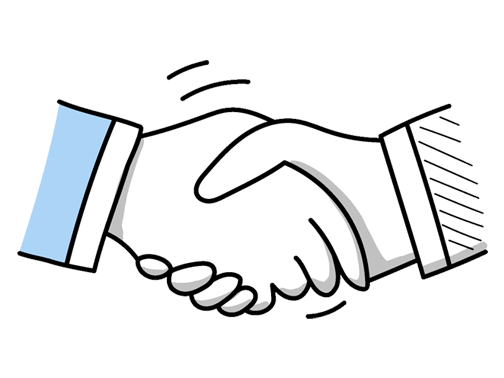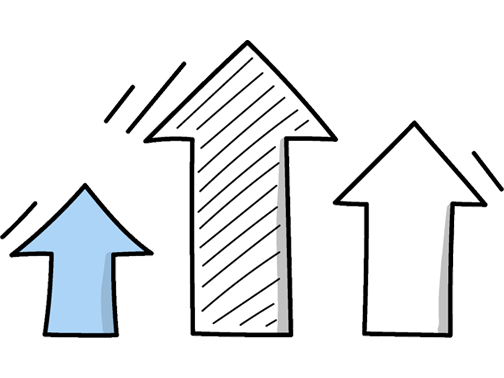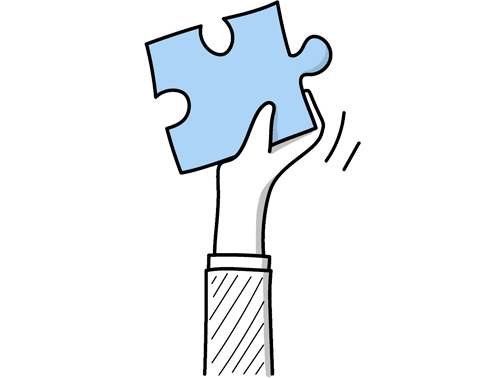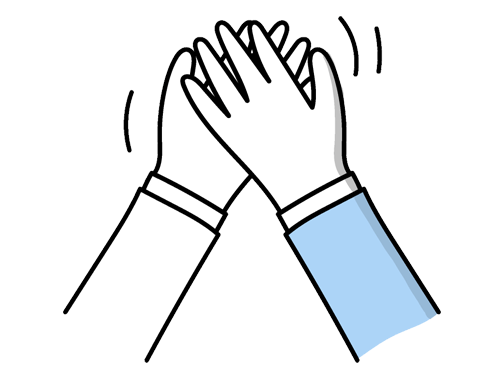Image Retoucher Interview Questions (2025 Guide)
Find out common Image Retoucher questions, how to answer, and tips for your next job interview
Practice Interviews Online - Identify your strengths and weakness in a realistic Image Retoucher mock interview, under 10 minutes
Practice Now »Image Retoucher Interview Questions
Questions like this help the interviewer assess your technical skills, problem-solving ability, and professionalism in meeting client needs. You should briefly describe specific projects showing your advanced retouching techniques, challenges you overcame, and how you incorporated client feedback to deliver high-quality results on time.
Example: In past projects, I’ve worked closely with fashion photographers to enhance images while preserving natural skin tones, often needing to balance quick turnarounds with detailed editing. One challenging shoot involved complex lighting, which required careful layering to maintain texture without losing vibrancy. I always make sure the client’s vision is front and centre, adapting my approach to meet both their expectations and tight deadlines.
Interviewers ask this to see how you handle difficulties and solve problems in your work. You need to describe a specific challenging project, explain the difficulties you faced, and highlight the techniques or creativity you used to overcome them.
Example: One of the toughest projects I tackled involved retouching a campaign with natural outdoor lighting that kept shifting. Balancing skin tones while preserving the atmosphere was tricky, especially with reflections and shadows. I had to carefully enhance details without making the images look overdone. It was a great learning curve in patience and subtlety, and the final results really highlighted the client’s vision authentically.
Employers ask this to see how well you balance improving skin appearance while maintaining a natural look. You need to explain that you use techniques like frequency separation and dodging and burning carefully to enhance texture without over-editing.
Example: When retouching skin, I start by smoothing textures carefully to keep a natural feel—using frequency separation helps me separate color from detail. I also work on reducing blemishes subtly with healing tools, avoiding an overdone look. Balancing light and shadows enhances the skin’s dimension. For example, when editing portraits, I focus on preserving unique features while creating a clean, polished finish.
What they want to know is how well you understand the technical requirements for different outputs and how you optimize images accordingly. You need to explain when to use specific formats like TIFF for high-quality print and JPEG for web, how you adjust resolution based on output needs, and mention maintaining consistency through color profiles and calibration.
Example: When working with images, I choose formats based on the final use—JPEGs for web to keep files light, TIFFs for print to preserve quality. I always adjust resolution to match the output, like 72 dpi for screens and 300 dpi for print. To keep everything consistent, I maintain organized folders with version control, ensuring the right specs go to the right place without compromising quality.
This question assesses your ability to manage client relationships and resolve conflicts effectively. You need to show that you listen carefully to the client's concerns, ask questions to clarify their needs, and stay professional while offering solutions to meet their expectations.
Example: If a client isn’t happy with the initial retouch, I make sure to listen closely to their feedback, asking questions to fully understand what they want changed. Then, I suggest ideas or tweaks that might get us closer to their vision. It’s important to stay professional and patient throughout, keeping the conversation open so they feel heard and confident we’ll get the result right. I find this approach usually leads to a positive outcome.
This interview question aims to assess your attention to detail, quality control process, and sense of responsibility. In your answer, clearly describe a specific mistake you found before delivery, explain how you identified and corrected it, and highlight your commitment to ensuring the final product met high standards.
Example: Sure! Here’s a concise and natural-sounding answer you could use:
Once, while reviewing a batch of retouched images, I noticed subtle color inconsistencies that didn’t match the client’s brand palette. I retraced my steps, corrected the tones, and double-checked the overall consistency before sending the files. Catching that early ensured the final images met their expectations and avoided any need for revisions, which I believe is key to maintaining trust and quality in my work.
What they want to know is if you prioritize preserving the original image and flexibility in your workflow. You should say you use layers, masks, and adjustment layers to make changes without altering the original pixels.
Example: In Photoshop, I focus on preserving the original image by using layers and masks. For example, I rely on adjustment layers to tweak colors without altering pixels, and smart objects to apply filters that remain editable. This approach lets me experiment freely and easily revert changes if needed, ensuring the integrity of the original photo throughout the retouching process.
This interview question assesses your ability to accept and act on client feedback professionally to ensure the final image meets their expectations. You should explain that you listen carefully to feedback without interrupting, clarify any uncertainties, and keep the client updated throughout the revision process.
Example: I see feedback as an essential part of the creative process. When a client requests changes, I listen carefully to understand their vision, then methodically adjust the image while keeping them updated. Clear communication helps build trust and ensures the final result matches their expectations. For example, with a recent project, regular check-ins prevented misunderstandings and led to a polished, satisfying outcome for both sides.
Questions like this assess your attention to detail and your quality control process, which are crucial in image retouching. You need to explain that you review images carefully at different zoom levels, compare them to the original to ensure color accuracy, and incorporate feedback from others to improve your work.
Example: Before submitting, I take a careful, step-by-step look at each image, checking for things like color balance, sharpness, and any stray marks. I often compare the retouched version with the original to spot inconsistencies. I also welcome feedback from colleagues and use it to refine the work, ensuring the final image meets both technical standards and creative expectations.
Interviewers want to see that you prioritize clear and consistent communication to build trust and ensure client satisfaction. You should say that you provide regular updates through preferred communication channels, actively listen to feedback by asking clarifying questions, and maintain transparency by promptly informing clients of any issues or delays.
Example: I like to keep clients in the loop by sharing regular updates, whether through quick emails or calls, to show how the project is progressing. If they have any feedback, I make sure to address it quickly and adjust the work accordingly. Being open and honest about timelines or any challenges helps build trust and ensures we’re always on the same page. For example, I once sent before-and-after samples midway to confirm we were aligned.
Questions like this test your problem-solving skills and attention to detail when handling challenging images. You need to say that you first assess the image quality to identify issues, then use editing tools to improve it, and finally communicate clearly with the client about what can and cannot be fixed.
Example: If I receive a low-quality image, I first take a close look to understand what can realistically be improved. Then, I use tools like sharpening or noise reduction to enhance it as much as possible without compromising its integrity. If the quality limits what can be achieved, I make sure to communicate that clearly to the client or team, so expectations are aligned from the start.
Employers ask this question to see how you manage client communication and ensure your work aligns with their vision. You should say that you clarify the client's expectations through detailed questions, carefully review your work against their brief, and actively seek feedback to make necessary adjustments.
Example: To make sure the final image hits the mark, I start by having a good conversation with the client to really grasp what they’re after. Throughout the process, I keep checking the edits against their original brief and the source image to stay on track. I also welcome their feedback and make adjustments as needed—once, a client wanted a warmer tone after the first draft, so I fine-tuned the colour balance until they were happy.
Interviewers ask this to see if you understand the technical importance of color accuracy and how you maintain it throughout your workflow. You should explain that you use calibrated monitors to review colors, apply precise color correction tools, and keep detailed notes or presets to ensure consistent color standards across projects.
Example: To ensure color accuracy, I start by working on properly calibrated monitors and frequently check my screen settings. I use reference images and color profiles to keep colors consistent throughout the edit. When adjusting tones, I rely on tools like curves and selective color corrections to fine-tune hues precisely. I also keep notes on the settings used for each project to maintain a reliable standard across sessions.
Questions like this assess your ability to manage time, maintain consistency, and handle volume under deadlines. You need to explain the project scope, how you organized your workflow, and ensured quality across all images.
Example: In a previous role, I handled a high-volume project for an e-commerce client, retouching over 500 product images. The challenge was maintaining consistent quality and color accuracy across the batch while meeting tight deadlines. I developed a streamlined workflow using batch processing techniques, which helped enhance efficiency without compromising attention to detail. It was rewarding to see the polished images contribute to a noticeable boost in the client’s online sales.
This question assesses your problem-solving skills and how you handle setbacks under pressure. You need to explain that you pause to evaluate the issue carefully, then adapt your approach methodically to maintain image quality while meeting deadlines.
Example: When I face an unexpected issue, I first take a moment to assess the problem carefully instead of rushing. For example, if a texture doesn’t blend as planned, I experiment with different tools or layers to find a subtle fix. I believe staying calm and flexible allows me to maintain quality without losing momentum. If needed, I’ll also communicate with the team to ensure the solution fits the project’s vision.
This interview question assesses your ability to manage time and maintain quality under pressure. You need to explain the situation, how you organized your work efficiently, and ensured the final images met standards despite the tight deadline.
Example: Sure. Once, a client needed urgent edits for a fashion shoot just hours before publication. I focused on prioritising key images, swiftly correcting skin tones and removing distractions without compromising quality. Staying calm and organised helped me deliver polished results on time, which the client appreciated. It was a good reminder that clear focus and adaptability are vital when the clock is ticking.
Hiring managers ask this to ensure you have the technical skills needed for the job and understand advanced retouching techniques. You should mention your proficiency with tools like Adobe Photoshop and briefly describe techniques such as frequency separation for skin smoothing to show your expertise.
Example: I'm comfortable using Adobe Photoshop and Capture One for detailed retouching and colour correction. I often work with layers and masks to ensure precise edits, like removing blemishes while preserving natural skin texture. Depending on the project, I can also adapt to tools like Lightroom or Affinity Photo to achieve the desired results efficiently. This flexibility helps me tailor my approach to each image’s unique requirements.
Hiring managers ask this question to see how well you communicate complex information to people without technical knowledge. You need to say that you simplify your explanation using everyday language and ensure the client understands by checking in and being patient.
Example: In a past project, a client was unsure why certain blemishes couldn't be removed without affecting the skin’s natural texture. I explained that retouching is about enhancing, not erasing, to keep images authentic. Using a simple comparison to photo filters helped them understand the balance between correction and preservation, which made them comfortable with the process and trust the final result.
This question assesses your ability to communicate and collaborate effectively within a creative team, ensuring that the final images meet shared expectations and deadlines. In your answer, explain how you clearly discussed project goals with photographers and designers, aligned your retouching style with their vision, and worked together to resolve any challenges.
Example: Yes, I’ve often worked closely with photographers and designers, making sure we’re all on the same page creatively and time-wise. For example, I’ll review the shoot’s mood boards with them and touch base regularly to adjust edits based on their feedback. If unexpected issues arise, I stay flexible and suggest solutions that keep the project moving smoothly, ensuring the final images meet everyone’s vision.
This interview question helps assess how you collaborate and prevent misunderstandings in a team setting. You need to say that you practice active listening by paraphrasing instructions to confirm understanding, use clear language suited to your audience, and choose the right communication tools like instant messaging for quick clarifications.
Example: I make it a point to really listen when colleagues share ideas or concerns, which helps me grasp their viewpoint fully. I keep my explanations straightforward, matching the technical know-how of whoever I’m speaking with. For example, when working remotely, I find quick video calls more effective than emails for resolving issues swiftly. Choosing the right way to communicate ensures everyone stays on the same page and projects run smoothly.
This interview question helps assess your time management and organizational skills under pressure. You need to say that you evaluate deadlines and project importance first, then create a clear schedule to manage your workload efficiently.
Example: When juggling several retouching projects, I start by reviewing deadlines and client priorities to organize my workload. I focus on urgent tasks first but also set aside time for detailed work, ensuring quality isn’t compromised. If needed, I communicate with clients or team members to clarify expectations. For example, I once balanced a high-volume campaign with tight turnaround by breaking work into manageable chunks, keeping progress steady without sacrificing attention to detail.
Interviewers ask this to see if you can handle ambiguity and clarify expectations before starting work. You need to explain that you ask the client clarifying questions to understand their vision, then propose options to ensure alignment before proceeding.
Example: When a client’s needs aren’t clear, I start by clarifying their vision through thoughtful questions, ensuring I understand their style and priorities. I often share initial edits to gather feedback early, making adjustments as we go. This collaborative approach not only builds trust but also ensures the final retouch aligns with their expectations, even if the brief starts off a bit vague.
This question assesses your attention to detail and your ability to deliver a cohesive visual style, which is crucial for professional image retouching. Explain that you use consistent color grading, lighting adjustments, and standardized editing workflows to ensure all images in the series match seamlessly.
Example: To keep a consistent look across a series, I usually start by setting a clear style guide—things like colour tones, contrast, and overall mood. I often create presets or use adjustment layers to apply uniform edits efficiently. For example, when working on a fashion shoot, I’d ensure skin tones and lighting feel cohesive from the first image to the last, which helps the collection feel polished and unified.
This question helps the interviewer understand your versatility and technical skills across various image types. You need to briefly describe the kinds of images you’ve worked on and mention specific retouching techniques you used to meet different client or style requirements.
Example: I’ve worked on a variety of images, from sleek fashion editorials where colour grading and skin retouching are key, to product shots that demand crisp detail and accurate background removal. I’ve also handled portraits, focusing on natural enhancements to bring out personality. Each type requires a slightly different approach, so I always tailor my techniques to match the client’s vision and the image’s purpose.
This interview question helps assess your technical knowledge, problem-solving ability, and attention to detail in color correction. You need to clearly explain your step-by-step process, including the tools you use, how you handle challenges like color inconsistencies, and how you ensure the final image looks polished and accurate.
Example: When I approach color correction, I start by assessing the image to identify any issues like color casts or imbalance. I then adjust white balance and tone curves carefully to restore natural hues. For tricky areas, like skin tones under mixed lighting, I use targeted adjustments to maintain realism. Throughout, I constantly compare with the original to ensure consistency and quality, making subtle tweaks until the colors feel just right.
Ace your next Image Retoucher interview with even more questions and answers
Common Interview Questions To Expect
The interviewer is looking for you to highlight your key skills and qualities that make you a strong candidate for the position. You can answer by discussing your technical skills, attention to detail, creativity, problem-solving abilities, or any other strengths relevant to the role of an Image Retoucher.
Example: My biggest strengths as an Image Retoucher are my attention to detail, creativity, and problem-solving abilities. I have a keen eye for color correction and image enhancement, which allows me to produce high-quality work. Additionally, I am always looking for new ways to improve my skills and stay up-to-date with the latest industry trends.
The interviewer is looking for examples of problem-solving skills, conflict resolution abilities, and how you handle challenges in the workplace. Be honest and provide a specific situation, your actions, and the outcome.
Example: Sure! One challenge I faced was when a client requested last-minute changes to a project that was already completed. I calmly communicated with the client to understand their needs, prioritized the changes, and worked efficiently to meet the deadline. The outcome was a satisfied client and a successful project delivery.
The interviewer is looking for honesty, professionalism, and a positive attitude in your response. You can mention career growth, seeking new challenges, or a desire for a better work-life balance as reasons for leaving your last job.
Example: I left my last job because I felt like I had reached a plateau in my career and was looking for new challenges to continue growing as an image retoucher. I wanted to explore opportunities that would allow me to expand my skills and knowledge in the field. Ultimately, I was seeking a better work-life balance and felt that a new job would provide me with that opportunity.
The interviewer is looking for a clear explanation of the reasons behind your decision to change career paths. Be honest, highlight relevant skills, and show how your new career aligns with your goals.
Example: I decided to change career paths because I realized my passion for creativity and visual arts was not being fulfilled in my previous job. I have always had a knack for editing and enhancing images, so transitioning to image retouching felt like a natural fit for me. I am excited to use my skills to create stunning visuals and pursue a career that aligns with my interests and goals.
The interviewer is looking for examples of how you prioritize tasks, manage your time effectively, and handle stress in a fast-paced environment. Be honest and provide specific examples from your past experiences.
Example: Yes, I am able to handle multiple responsibilities at once. In my previous role as an image retoucher, I had to juggle editing multiple photos for different clients while meeting tight deadlines. I prioritize tasks based on urgency and importance, allowing me to effectively manage my time and deliver high-quality work efficiently.
Company Research Tips
The company's official website is a goldmine of information. Look for details about the company's history, mission, vision, and values. Pay special attention to any sections related to their work in image retouching or digital media. This will give you a sense of their style, standards, and the types of projects they handle. Also, check out their 'News' or 'Blog' section to stay updated with their recent activities and achievements.
Tip: Look for any specific language or phrases they use to describe their work or values. Incorporating this language into your interview responses can show that you're a good cultural fit.
Social media platforms can provide a more informal view of the company. LinkedIn can provide information about the company culture, employee testimonials, and the backgrounds of the people who currently hold the position you're applying for or the team you'll be working with. Instagram, Facebook, or Twitter can show you the company's public image and how they interact with their customers.
Tip: Follow the company on these platforms to show your interest. Engage with their posts where appropriate.
Understanding the company's position in the market can help you speak to their strengths and how you can contribute to their goals. Research their main competitors and note what sets your potential employer apart. This could be anything from their retouching techniques, client base, or unique selling propositions.
Tip: Use this information to frame how you can bring value to the company in the context of their market position.
The job description is a key resource for understanding what the company is looking for in a candidate. Review it carefully to understand the skills and experiences they value for the Image Retoucher role. This can give you insights into the company's current needs and priorities.
Tip: Use the job description to tailor your interview responses. Highlight past experiences and skills that align with what they're looking for.
What to wear to an Image Retoucher interview
- Smart casual attire
- Clean, well-fitted jeans or trousers
- A button-down shirt or blouse
- Comfortable, polished shoes
- Minimal, professional makeup
- Neat, well-groomed hairstyle
- Avoid flashy jewellery
- Carry a portfolio of your work
- Avoid overly bright colours
- Ensure clothes are ironed and clean





